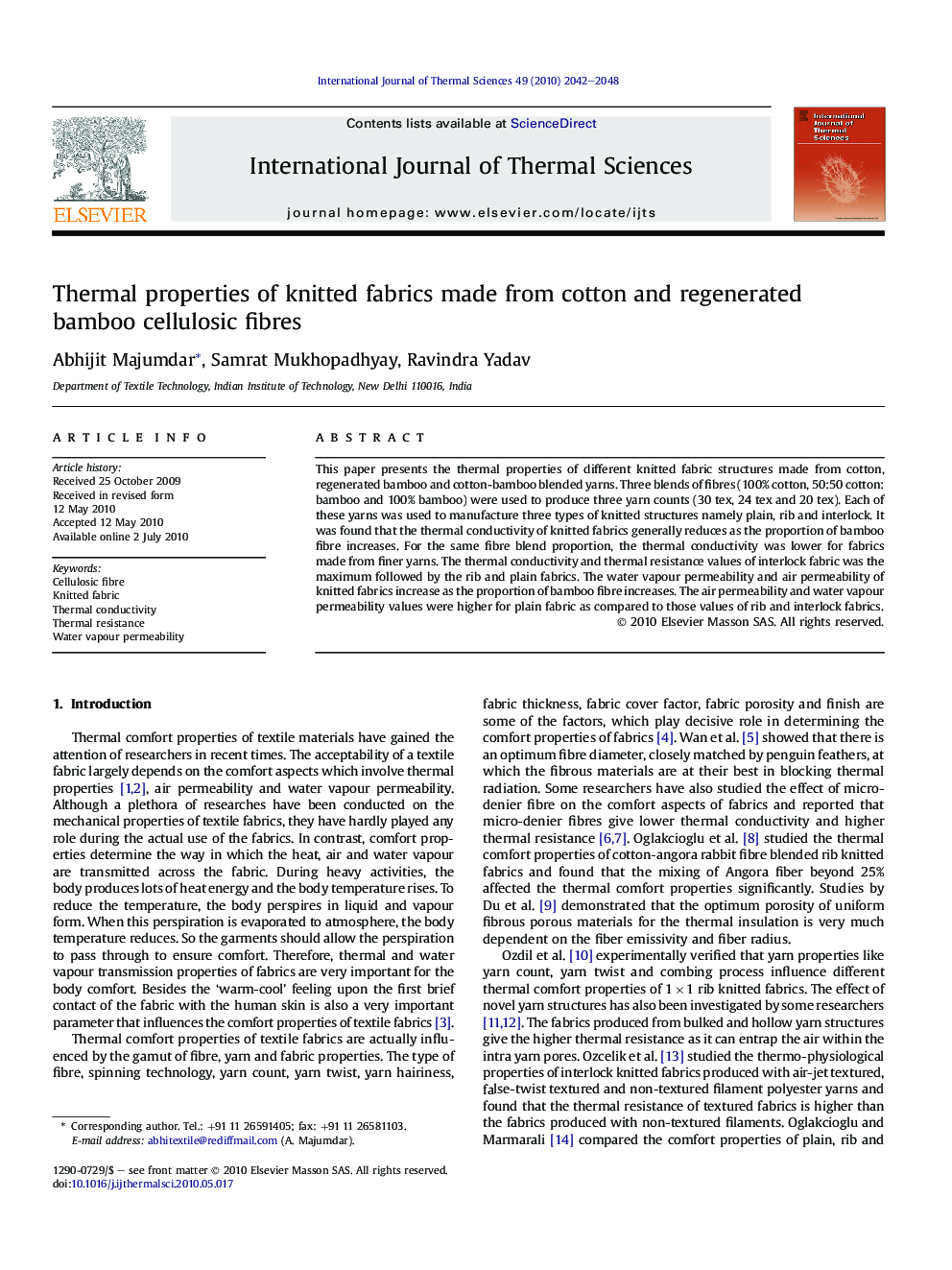| Article ID | Journal | Published Year | Pages | File Type |
|---|---|---|---|---|
| 670230 | International Journal of Thermal Sciences | 2010 | 7 Pages |
Abstract
This paper presents the thermal properties of different knitted fabric structures made from cotton, regenerated bamboo and cotton-bamboo blended yarns. Three blends of fibres (100% cotton, 50:50 cotton: bamboo and 100% bamboo) were used to produce three yarn counts (30 tex, 24 tex and 20 tex). Each of these yarns was used to manufacture three types of knitted structures namely plain, rib and interlock. It was found that the thermal conductivity of knitted fabrics generally reduces as the proportion of bamboo fibre increases. For the same fibre blend proportion, the thermal conductivity was lower for fabrics made from finer yarns. The thermal conductivity and thermal resistance values of interlock fabric was the maximum followed by the rib and plain fabrics. The water vapour permeability and air permeability of knitted fabrics increase as the proportion of bamboo fibre increases. The air permeability and water vapour permeability values were higher for plain fabric as compared to those values of rib and interlock fabrics.
Keywords
Related Topics
Physical Sciences and Engineering
Chemical Engineering
Fluid Flow and Transfer Processes
Authors
Abhijit Majumdar, Samrat Mukhopadhyay, Ravindra Yadav,
